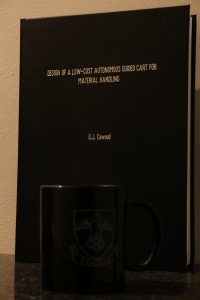This post gives a summary of the different Driver’s Licence Tests one can take in South Africa. What one is required to perform when taking the test. To do your driver’s licence you need to have a valid Learner’s Licence and appropriate vehicle for the test.
If you need more information on any of the below topics, all the instructions and guidelines are set out in excruciating detail on the eNATIS website, the documents will answer any question you can possibly have about the actual tests. See them all here.
All tests require a pre-trip inspection. These details vary per vehicle, but include such things as ensuring roadworthiness of vehicle, checking for obstructions and leaks as well as testing lights and other required electronics in the vehicle. A full list for the inspections is available for each vehicle in the earlier mentioned documents.
Motorbikes (A / A1)
There is no difference between the tests for an A or A1 licence. The entire test takes place in the yard and consists of a pre-trip inspection, a starting procedure and a skill test. You are required to supply a roadworthy motorcycle to do the test on; trikes, quads and sidecars are not permitted. Note: The bike you use will dictate what licence you get. If you use a 100cc motorbike you will only get an A1 licence, if you use an automatic (eg. scooters), that restriction will be on your licence.
The skills test comprises of the following.
- Speed management (accelerating to 25kmph and then stopping at a fixed point)
- Moving off/turn (drive in a straight line and turn left at marked area. Come to a stop before taking off again and turning a left corner again)
- Lane change (accelerate in a straight line, do a lane change)
- Incline start (from a stationary position, take off without rolling backwards)
- Turning speed judgement (turn a corner riding through marked lines within a certain time)
- Emergency stops/swerves (drive in a straight line, when a light comes on either stop or swerve depending on which light).
Light Motor Vehicles (B / EB)
For both B or EB the test consist of a pre-trip inspection, a yard and a road test. For the B test your vehicle must be a single vehicle with GVM less than 3.5 tons and be longer than 3m. For the EB you must either have an articulated motor vehicle with GCM less than 3.5 tons, or a combination of vehicles where the drawing vehicle has GVM less than 3.5 tons and the trailer is more than 750kg.
For the yard test, both tests consist of:
- A turn (driving forward and round a corner)
- An alley dock (reversing into a parking bay that is perpendicular to starting direction)
- A parallel park (for EB the trailer is uncoupled)
- An incline start (taking off from a stop on an incline)
- Additionally an EB test requires a reverse in a straight line (reverse the vehicle while staying within the demarcated area)
The road test requires you to drive through a section of the town along preset routes. Their are certain minimum requirements for the route, but the driving is to test your ability to adhere to the K53 driving guidelines. Driving schools know these routes and the K53 guidelines and allow you to practise the routes before hand.
Heavy Motor Vehicles (C / C1 / EC / EC1)
For all codes the test consists of a pre-trip inspection, a yard and a road test. The test is for vehicles with GVM more than 3.5 tons, vehicles longer than 6m, vehicle combinations where the trailer GVM exceeds 350kg or an articulated vehicle GCM is more than 3.5 tons. Note: the licence you receive will be based on the vehicle you provide to test out on.
The yard test consists of:
- A turn (driving forward and round a corner)
- An alley dock (reversing into a parking bay that is perpendicular to starting direction)
- An incline start (taking off from a stop on an incline)
- A straight reverse (reverse the vehicle while staying within the demarcated area)
The road test is as for a Light Motor Vehicle (see above).
Conclusion
Getting a driver’s licence in South Africa is often said to be difficult. If you are a capable driver though and are able to follow instructions for half an hour you should have no problems passing the test.
Although expensive, it is often of great advantage to take lessons with an accredited driving school. They will teach you how to pass the test, allow you to practice the yard manoeuvres as well as drive you along the route the road test will take and critique you on your conformance to the K53 guidelines.
Comment Note: Over the next few months I will have minimal access to the blog, as such comments are being locked until further notice.
 But I guess this is what makes peer-reviewed journals (and referencing) so important. Cause it prevents someone just saying something, and ensures accountability. As much as a pain as it is.
But I guess this is what makes peer-reviewed journals (and referencing) so important. Cause it prevents someone just saying something, and ensures accountability. As much as a pain as it is.




